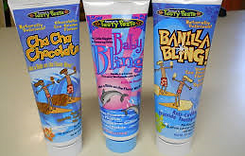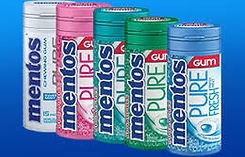Call Us: 864-369-2966


Is It Safe to Go to the Dentist While Pregnant?
The answer is YES!
The use of local anesthetics is safe for both pregnant moms and their babies. Seeing a dentist while pregnant isn’t only safe, it can help moms-to-be cope with pregnancy-related symptoms like bleeding gums. Expecting mothers may have many questions during this exciting time, so the ADA put together a list of the 5 most common concerns women have about going to the dentist during pregnancy. Please see the following link to learn more.
http://www.mouthhealthy.org/en/pregnancy/concerns?source=Morning_Huddle
Ever wonder why....
We take x-rays???



Dental x-rays are an essential part of your overall dental health. X-rays are pictures of your teeth, bone, jaw, and soft tissues surrounding your teeth. There are several types of x-rays, or pictures, that we may take that include bitewings, periapicals (also known as PAs), and a panoramic x-ray (also known as a PAN). One important thing that you, as a patient, should know is that all of our x-rays are digital. Digital x-rays are sent directly to your digital chart and are saved as part of your dental record. Benefits of digital x-rays include less radiation, shorter dental appointments, and higher quality images.
Here is why we take x-rays:
-
Dental x-rays enable us, your dentist, to look for decay between your teeth. Sometimes decay isn't visble to the naked eye and exsists in areas the dentist cannot see. Detecting this decay through x-rays and routine cleanings and exams at the early stage of the decay can prevent it from growing bigger and spreading to nearby healthy teeth.
-
Dental x-rays can assist us to check for bone loss associated with gum disease. In this situation an x-ray can show the degree of bone loss.
-
X-rays can help us check for decay under fillings and crowns. Decay under fillings and crowns can occur sometimes. An x-ray is the only way to detect this kind of decay.
-
X-rays will allow for us to look for infection at the tip of the tooth root. In this case, a periapical x-ray will need to be taken. Infections can appear at the very bottom of the tooth. An x-ray is the only way for a dentist to confirm that there is infection present. This will also allow for the dentist to treat the infection as he/she sees fit.
-
A dental x-ray allows the dentist to examine the area before each dental procedure. Dentists need a full view of the teeth and bone before a procedure such as a filling, extraction, crown, ect. An x-ray before a procedure will show a "map" of the decay.
-
A panoramic x-ray, also known as a PAN, will shows us an overall look at a patients mouth. A PAN allows the dentist to see impacted teeth (wisdom teeth are the most common), a look at your joint, bone, and nasal sinuses, and any cysts inside your mouth. This particular x-ray is taken every 3-5 years and will allow for us, as your dentist, to provide you with the best pissible care and to keep your dental record current.
Each x-ray that a dentist takes, or will take, is a vital part of a petients dental health and will aid the dentist in diagnosing anything that is going on inside a patients mouth. Without a dental x-ray the dentist will not be able to effectively treat each patient. Each dental x-ray seves a very imporant purpose for each patients dental record and their treatment.

Xylitol


Xylitol is a sweetener that is found in plants and used as a substitute for sugar. Xylitol is called a nutritive sweetener because it provides calories, just like sugar. However, it is less likely than sugar to contribute to dental caries. It is an all-natural way to boost your oral health. Xylitol works to reduce and combat the number of cavity causing bacteria in our mouths. It also helps create the right pH levels in our mouths.
Xylitol can be found in sugar free gum, containing more xylitol (one of the 1st ingredients listed) is recommended. Three gum brands containing the most Xylitol:
-
Spry (available online)
-
Mentos sugar free gum
-
Icebreakers, Icecubes
It can also be found in toothpaste. Toothpaste containing xylitol is just as effective as fluoride in fighting cavities and is it easy to get all the benefits each and every time you brush your teeth. If you are looking for a great alternative to fluoride toothpaste, then xylitol toothpaste is the answer. Brands containing xylitol:
-
Spry (available online and does not contain fluoride)
-
Tanner’s Tasty Paste, geared toward children (available here in our office)
-
Tom’s of Maine (available online)
Dry Mouth Drops containing xylitol is also a tooth-friendly way to help promote dental health. These drops are great for diabetics on the go and a perfect complement to tooth brushing. They also help reduce oral dryness, reduction of plaque forming bacteria, and reduces plaque debris. Xylitol Dry Mouths Drops are available for purchase here in our office.

Best and Worst Halloween Candy for Your Teeth
Halloween is just around the corner. Costumes have been bought and thoughts of ghosts, goblins, and candy are dancing around everyone's head. But is Halloween candy really a trick or a treat? Please click on the following two links to help you decide what is the best candy for your overall dental health.
http://www.mouthhealthy.org/en/az-topics/h/halloween-candy-survival-guide?source=Morning_Huddle